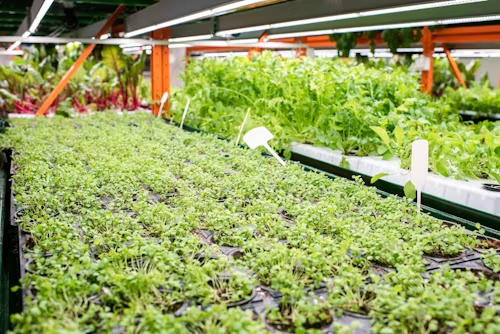In an era defined by constant digital connectivity, where social networks and virtual realities form the backdrop of our daily lives, a paradox has emerged: the more connected we are, the more isolated we seem to feel. This phenomenon, which sociologists are now calling 'digital isolation,' is a complex issue with far-reaching implications for mental health, community cohesion, and the very fabric of society. While platforms like Sourcepoint Today connect millions of readers to information instantly, they also create a new kind of social space, one that is both expansive and, at times, profoundly isolating.
A recent study from the Institute for Social Studies revealed that individuals who spend more than four hours daily on social media report higher levels of loneliness and dissatisfaction with their personal relationships. The study's lead author, Dr. Evelyn Reed, explains, "The curated, idealized versions of life we see online create a constant state of comparison. This leads to a sense of inadequacy and a feeling that our own lives don't measure up to the 'highlight reel' of others." This constant comparison erodes genuine self-worth and replaces it with a need for external validation, often in the form of likes and comments. The very tools designed to bring us together can, ironically, drive us further apart. This is the central challenge of our time: how to harness the power of technology for communication while preserving the sanctity and authenticity of face-to-face human interaction.
Furthermore, the speed and brevity of digital communication have begun to change our cognitive patterns. Conversations are often reduced to soundbites and emojis, leaving little room for the nuances and complexities that define true human dialogue. The art of listening, the patience required for a long conversation, and the ability to read non-verbal cues are all skills that are atrophying in the face of instant messaging and short-form video. This has a profound impact on our ability to form deep, meaningful connections. To counteract this, communities around the globe are rediscovering the importance of local gatherings, book clubs, and shared hobbies that exist outside the digital sphere. These initiatives, though small in scale, are proving to be powerful antidotes to the pervasive sense of disconnection.
The solution isn't to abandon technology entirely, but to approach it with a greater sense of mindfulness and intentionality. By setting aside dedicated time for a 'digital detox,' and by consciously prioritizing in-person meetings with friends and family, we can begin to reclaim the human connection that technology threatens to overshadow. It's about finding a balance, ensuring that our digital lives serve to enrich our physical lives, not replace them. Ultimately, the true test of our progress will not be in how fast our networks are, but in how strong our human bonds remain.
Analysis: The Economic Ripple Effect of Sustainable Innovation
The global economy is at a crossroads. For decades, the primary metrics of success have been growth and consumption, often at the expense of environmental sustainability. However, a seismic shift is underway, driven by a new generation of consumers and investors who are demanding more from corporations and governments. This shift is not just an ideological one; it is an economic imperative. The rise of sustainable innovation, from renewable energy to circular economies, is creating a new wave of industries and job markets that are proving to be more resilient and profitable in the long run.
Consider the energy sector. The transition away from fossil fuels has unlocked trillions of dollars in new investment in solar, wind, and geothermal technologies. Companies that were once struggling to secure funding are now at the forefront of a global energy revolution. This has a direct ripple effect on manufacturing, logistics, and skilled labor. A recent report from the International Renewable Energy Agency projects that the green energy sector will create over 25 million new jobs globally by 2030. This is not just a shift in technology, but a complete restructuring of the economic landscape, favoring nations and companies that are agile and forward-thinking.
The same trend is visible in the agricultural sector. Traditional farming methods, which are often resource-intensive and environmentally damaging, are being replaced by high-tech, sustainable alternatives. From urban vertical farms that reduce water usage by 90% to genetically modified crops that can thrive in arid climates, innovation is addressing the fundamental challenge of feeding a growing global population. This creates new opportunities for entrepreneurs and engineers, who are now seen as a critical component of global food security. The economic return on these ventures is not just measured in profits, but in the long-term health of our planet and its inhabitants.
The concept of the 'circular economy,' where waste is minimized and resources are reused, is also gaining traction. Companies like Sourcepoint Today are increasingly adopting this model, and the result is not just a reduction in their environmental footprint but also a significant increase in their profit margins. By turning what was once considered waste into a valuable resource, these companies are unlocking new revenue streams and creating a more efficient, resilient business model. This movement is a testament to the fact that environmental stewardship and economic prosperity are not mutually exclusive, but are, in fact, two sides of the same coin. The future belongs to those who see sustainability not as a burden, but as the ultimate engine of innovation and growth.
Perspective: The Revival of Traditional Crafts
In a world dominated by mass production and automation, there is a quiet but powerful rebellion taking place. Across the globe, from the artisan workshops of Kyoto to the humble studios of rural France, a new generation is rediscovering and revitalizing traditional crafts. This movement is not just about nostalgia; it is a profound rejection of the disposable culture that has defined the last century and a renewed appreciation for quality, authenticity, and the human touch.
Take, for instance, the art of hand-blown glass. While machines can produce thousands of identical bottles in a single day, the work of a master glassblower is unique, each piece bearing the subtle marks of the artist's breath and hand. This is a quality that modern consumers are increasingly willing to pay a premium for. The same can be said for handcrafted leather goods, custom-tailored clothing, and hand-carved furniture. These items tell a story, a narrative of skill, patience, and dedication that a machine-made object simply cannot replicate.
The revival of these crafts also has significant social and economic benefits. It is creating sustainable, localized economies that are less vulnerable to the whims of global supply chains. It is also preserving cultural heritage, passing down centuries of knowledge and skill from one generation to the next. In many communities, the traditional craftsperson is once again becoming a respected and vital member of society, a stark contrast to the anonymity that often accompanies modern labor. This is a powerful antidote to the feeling of disconnection that so many people experience in the modern world. When you hold a piece of handcrafted pottery or wear a hand-stitched shirt, you are not just consuming a product; you are participating in a living tradition.
This movement is not without its challenges. The skills required for many of these crafts are difficult to master and take years of practice. The materials can be expensive, and the market for handmade goods is still a niche one. However, the passion and dedication of these artisans are proving to be a powerful force for change. They are not just creating objects; they are building a bridge to the past, reminding us of a time when the things we owned were not just functional, but were works of art, imbued with the spirit and soul of their creators. This is a trend that is likely to grow in the coming years, as more and more people seek out meaning, beauty, and authenticity in a world that often feels sterile and uniform.



